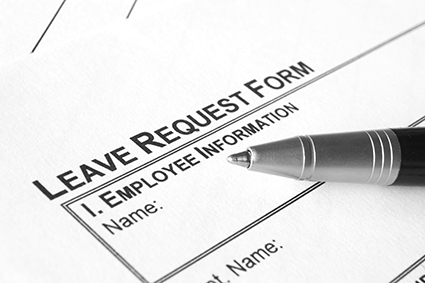By Susan Schoenfeld, JD, Senior Legal Editor
For a Limited Time receive a
FREE Compensation Market Analysis Report! Find out how much you should be paying to attract and retain the best applicants and employees, with
customized information for your industry, location, and job.
Get Your Report Now!As employers scramble to manage the recent onslaught of paid sick leave legislation in the states and locally, a new paid leave trend may be emerging—paid family leave.

Recently, New York state passed a paid family leave law under which, beginning in 2018, eligible employees will be paid 50% of their average weekly wage for up to 8 weeks. When fully implemented in 2021, the law will entitle eligible employees to up to 12 weeks of leave paid at 67% of their average weekly wage.
At about the same time New York’s paid family leave law was passed, California’s Governor, Jerry Brown, signed a bill that will increase the amount of wage replacement payable under the state’s paid family leave (PFL) law. Beginning January 1, 2018, qualified employees will be eligible to receive up to 70% of their weekly wages from the state during a qualifying leave of absence.<.p>
Not to be outdone, in April 2015, the City of San Francisco, California, adopted an ordinance that will require private employers to fund family bonding leave, effective on January 1, 2017. Under the city’s ordinance, employers with 20 or more employees—at least one of whom must work in San Francisco—will have to provide "supplemental compensation" to covered employees who take leave under California's PFL law to bond with a newborn or newly adopted child, or to place a child up for adoption or foster care.
Paid family leave in other states
New York is the fourth state, following California, New Jersey, and Rhode Island, to enact a paid family leave program administered as part of the state disability insurance program. In 2007, Washington state passed a paid family leave law, originally to take effect in October 2009. However, subsequent state legislation indefinitely postponed the implementation of Washington's paid family leave law until a funding mechanism is developed and funds are appropriated.
The three states that currently have paid family leave programs in place—California, New Jersey, and Rhode Island—provide employees with limited wage replacement benefits when they miss work to provide care for their family members. Among other things, all three programs:
- Are administered through a state-run disability insurance program that predated the state’s paid family leave program;
- Are funded entirely by employees through payroll deductions; and
- Provide benefits to employees who are on leave to care for a newborn baby, newly adopted child, or newly placed foster child, or seriously ill family members.
Because all three paid family leave programs are administered through their state’s disability insurance program, employees in each state can also receive benefits if they must take leave for their own health conditions, including pregnancies, although they typically must be continuously and totally unable to perform their customary work in order to qualify.
Is this a trend?
It is no secret that the United States lags in providing paid family leave for employees. Recent data from the Bureau of Labor Statistics’ National Compensation Survey revealed that only 12% of private sector workers in the United States have access to paid family leave.
When measured against other countries around the world, the difference becomes more stark. According to a 2014 report by International Labour Organization, only two countries out of the 185 reviewed—the United States and Papua New Guinea—do not have public policies for paid maternity leave. According to the report, 78 of the 185 countries reviewed also mandated paternity leave, with 70 of those providing paid leave to new fathers.
A federal paid family leave law appears unlikely in the current political climate. However, the recent passage of paid family leave legislation in New York, California, and San Francisco and a national trend in the passage of paid sick leave laws at the state and local level, indicates that the movement toward paid leave is gaining momentum.
According to paid family leave advocacy group, Family Values @ Work, there are ongoing efforts in at least 15 state legislatures and Washington, D.C., to pass paid family leave laws. According to the group’s Executive Director, Ellen Bravo, there could be at least 12 states with paid family leave laws within 5 years.
DOL to fund research
As momentum continues to grow for paid family leave bills, in 2016, the U.S. Department of Labor (DOL) announced the availability of $1 million to fund research and analyze how paid leave programs can be developed and implemented across the country.
According to the DOL, funding will be available for paid family leave statistical analysis, such as cost-benefit or actuarial studies; feasibility analysis; economic-impact analysis; financing, eligibility, and benefit modeling; and education, outreach, and marketing analysis for implementation purposes.
The activities to be funded may include identifying and studying viable options for financing and administering a paid family and medical leave program in states that do not have a temporary disability insurance program (e.g., employer mandates; other social insurance programs; publicly funded programs).
Additionally, eligible entities that have already completed analyses and are awaiting legislative action to formally adopt or have recently adopted a paid family and medical leave program may apply for funds to support preimplementation or initial implementation activities.
The Women’s Bureau at the DOL will administer the funding opportunity. This is the third year DOL has funded paid leave research. The 2016 initiative builds on grant programs in 2014 and 2015, through which the DOL awarded over $2 million to support paid-leave studies.
Additional resources
|  Susan Schoenfeld, JD, is a Senior Legal Editor for BLR’s human resources and employment law publications. Ms. Schoenfeld has practiced in the area of employment litigation and counseling, covering topics such as disability discrimination, wrongful discharge, sexual harassment, and general employment discrimination. She has litigated numerous cases before the U.S. Court of Appeals, state court, and at the U.S. Department of Labor. Susan Schoenfeld, JD, is a Senior Legal Editor for BLR’s human resources and employment law publications. Ms. Schoenfeld has practiced in the area of employment litigation and counseling, covering topics such as disability discrimination, wrongful discharge, sexual harassment, and general employment discrimination. She has litigated numerous cases before the U.S. Court of Appeals, state court, and at the U.S. Department of Labor.
In addition to litigating employment cases in state and federal court, she provided training and counseling to corporate clients regarding employment-related issues. Prior to entering private practice, Ms. Schoenfeld was an attorney with the Civil Rights Division at the U.S. Department of Labor in Washington, D.C., where she advised federal agencies, drafted regulations, conducted inspector training courses, and litigated cases for the Office of Federal Contract Compliance Programs, the Directorate of Civil Rights, and the Mine Safety and Health Administration. Ms. Schoenfeld received her undergraduate degree, cum laude, with honors, from Union College, and her law degree from the National Law Center at George Washington University. Questions? Comments? Contact Susan at sschoenfeld@blr.com for more information on this topic |